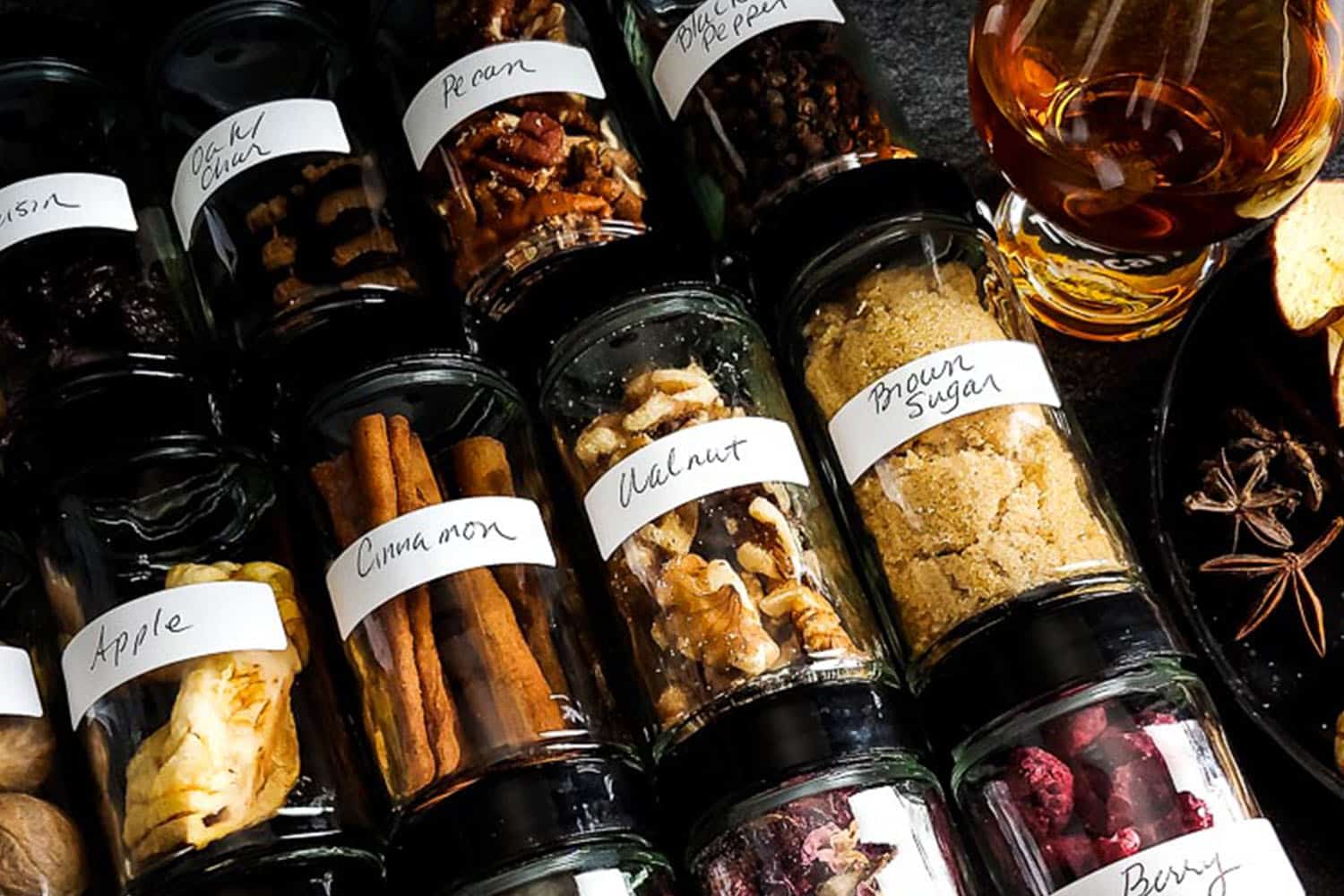
Train Before You Trail: How to Build Your Own Bourbon Sensory Kit (Part 1)
You’d train for a marathon, right? So, any two, three or four day trip to Kentucky’s Bourbon Trail deserves a little training as well. The bonus side: you’ll be training with Bourbon. You won’t be tracking split speeds and durations, rather, we’re going to exercise the senses instead – your sense of smell and taste. Did I mention you get to practice with Bourbon?
We all know that the majority of our sense of taste comes from aromas and the sense of smell. Want to test that? Take a sip of Bourbon holding your nose shut with your fingers, then another sip with your nose free to inhale as you take a drink. Which tastes better?
Truly appreciating the beauty of Bourbon grows easy when you can nose and taste your way through flights at distilleries like a pro. It makes enjoying the Ky Bourbon Trail that much more fun as you differentiate between the expressions at different distilleries.
About Nosing Bourbon and Whiskey
If you’re just getting into the whiskey game, you may need a short primer on how to nose (smell) your whiskey. You’ve likely been in tastings where the expert mentions the aromas she’s getting. Caramel, vanilla, baking spices, stone fruit, oak, tobacco, and leather are very common. But how does she get that? It’s a skill you can learn.
To nose your whiskey, bring the glass up to your nose and pass it under your nose while you inhale gently with your lips slightly parted. Opening the mouth slightly helps when nosing high proof spirits like whiskey. As the alcohol sits in the glass and warms, a layer of alcohol vapor sits in the glass, opening your mouth will dissipate some of that burn as you inhale.
Sometimes it helps to close your eyes or look down to focus you on your sense of smell. Some people will dip their entire nose into the glass, or smell with just one or another nostril. You can try both. Note which method works best for you.
Remember that your palate is yours and no one else’s. The sense of smell is highly personal and tied up in sense memories. Someone else may smell cut grass, honey, or black pepper. You might get vanilla, banana, and nut.
Neither is incorrect when nosing something as complex as whiskey. It’s just an expression of your sense associations with the aromatic compounds in your glass.
Above all, don’t worry if you don’t get the same notes as someone else. Just relax, have fun, and let your mind wander while you’re nosing and sipping.
So, let’s talk about how to get better at nosing.
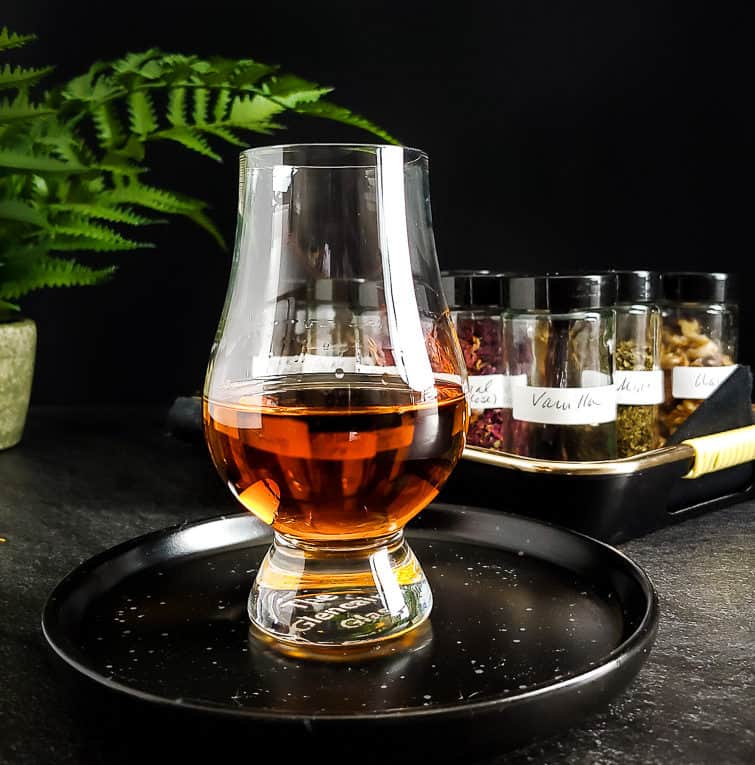
How to Make a Sensory Training Kit
To exercise our sensory muscles, let’s put together a kit containing samples of the items most frequently associated with the smells and tastes of Bourbon. I put one together when I started attending tastings and wanted to understand how to get better at identifying what I was smelling and tasting.
I went to my spice rack and pantry and grabbed everything I could see that I’d heard associated with nosing Bourbon. Vanilla, cinnamon, maple, honey, caramel, corn, rye – all the flavors and aromas I’d heard again and again in tastings. I put each in a small glass spice jar and labeled them.
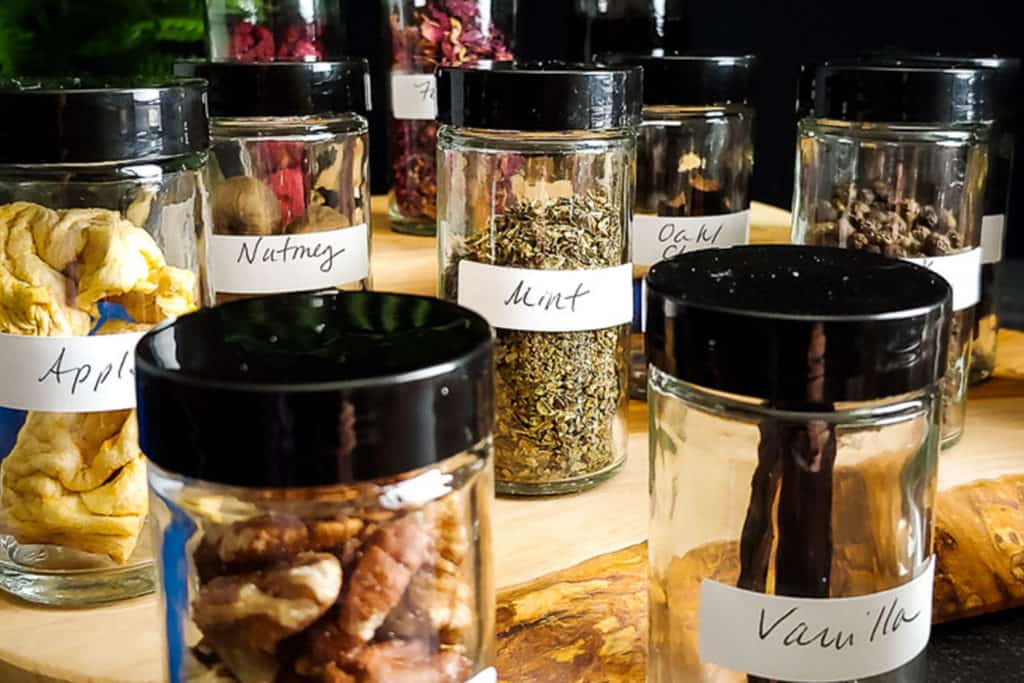
Here’s a list of some easy to find items to use in creating your own sensory kit:
· Vanilla bean
· Cacao nibs
· Wheat
· Corn
· Barley
· Rye
· Brown sugar
· Caramel
· Maple
· Honey
· Toffee – if you can find some without chocolate
· Pecan – toast them for more aromatics
· Walnut – toast them for more aromatics
· Nutmeg – whole
· Cinnamon sticks
· Orange – Dried orange chip or dried orange peel or orange extract
· Oak – Small pieces of oak, like for your smoker
· Apple – dried
· Dried stone fruit – apricot, peach, plums
· Smoke
· Mint – dried
· Banana – dried (banana chips won’t work)
· Leather – cut up a small piece of leather
· Tobacco – unflavored pipe tobacco
While you can use plastic containers, make sure the plastic isn’t so new that it’s off-gassing, giving you some off-notes when you nose your samples. I always prefer nosing both the sensory kit and my whiskies from glass containers.
Make sure to label each jar, especially if they aren’t clear. I kept mine in a small memento box meant for holding photos. I’ve seen others put their nosing kits in cork-topped test tubes in a test tube rack. Go with the easiest to open and nose when filling your kit.
How to Train with a Nosing Kit
Now that you’ve put together your kit, it’s time to start training.
Write Down a Sense Memory for Each Item
As you take in the smell of each item, take a moment to write down a sense memory.
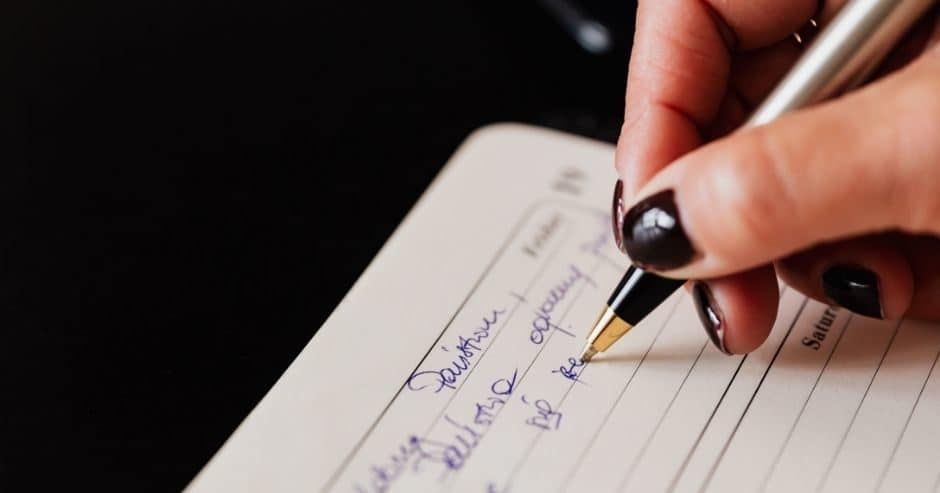
Much of our associations with smells is tied up in emotional memories. For example, for me, I associate the smell of vanilla with cracking open a bottle of vanilla to pour into a batch of chocolate chip cookies. Mint makes me think of my first mint julep at the track. Chocolate makes me think of a chocolate souffle I had in an elegant family dinner. Each of those scents evokes a slight memory.
Sometimes, when you’re having trouble identifying a scent, it will make you think of something associated with it. For example, my husband nosed a whiskey and said it smelled like a sauna. Random, right?
So, I asked clarifying questions. Was it the smell of chlorine from a nearby pool? Was it the smell of the hot stones water was poured over? Was it the smell of the scented steaming coming off the hot stones?
Turns out it was cedar. He smelled cedar from wood panels inside the sauna. His sense memory for cedar was that sauna experience.
Sometimes sense memories are fleeting. You might not immediately recognize the smell of tobacco, but you might fleetingly think of your uncle. If he smoked a pipe, chances are your experience of the smell of tobacco comes through as a memory of him. Make note and remember for later.
Sensory Train While Seeing the Jars
For each jar, give it a little shake before nosing it. That little bit of friction will heat up the contents a bit and activate those aromatic compounds.
However, be careful if you’re using ground spices. Those fine particulates will waft up out of the container and may stay in the air for a bit. This is why I use whole spices when possible such as cinnamon sticks and cocoa nibs instead of ground cinnamon and cocoa powder.
Nose the jar while you can see the contents and concentrate on any sense associations that come up. Those memories and sense associations are likely to pop up for you when nosing whiskies as well.
Train Blind
The last step is training blind. Put on a blind fold and go through the kit items one by one to see if you can identify the items. Or tape paper around each jar so you can’t see the contents as you nose.
If you want to do this truly blind, put on a blindfold and have your best Bourbon buddy hold the open containers beneath your nose while you smell the aromas. You won’t have the sound of the items or the weight of the container to hint at the contents.
Side note: this is incredibly fun to do as a group the night before heading out to some distilleries. Have a Bourbon to drink, get out the nosing kit and a blindfold and see who can get the most right. Whiskey enthusiasts are incredibly competitive. This also gets everyone talking about memories associated with smells and tastes – and that will make your Bourbon tasting the next day even more fun. (“It smells like Grandma’s pantry!” or “It smells like Uncle Ted.”)
If you Don’t Want to Make Your Own Sensory Kit
While it’s easy to make a DIY sensory kit (and gift if you’ve got some Bourbon buddies coming along with you on the trail), there are also some available online. Kits range in price from $70-399.
A Stave and Thief Sensory Kit comes with the Executive Bourbon Steward class at Moonshine University and it’s a kit with small scent samples from 36 of the most common aromas found in whiskies. This includes samples of scents from the heads and tails of Bourbon production as well as more easily recognizable food-related aromas. It’s easily my favorite to use when I need a broad range of flavors.
The Nose Your Bourbon Sensory Kit comes in a small box with 18 different containers with samples of common scents from Bourbon. Each small container has a little sample of each of the items, allowing you to shake and nose as needed to train your senses. This set very closely matches the set I created above, but I include a few more scents that I find very common in whiskey nosing. I loved that instead of small liquid vials it contained actual cinnamon, clove, pepper, etc. like my own kit.
The Whisky Aroma Kit contains 12 or 24 aromas in liquid form, much like the Stave and Thief Sensory Kit. It also includes a flavor chart and comes in a small leather binder.
Click Here for Part II

About Heather Wibbels, the Cocktail Contessa
Heather Wibbels, an award-winning mixologist and Chair of the Bourbon Women Board of Directors, is a digital content creator and photographer creating whiskey drinkers one cocktail at a time. Her creations can be found in Bourbon Plus, American Whisky Magazine, Drinkhacker, Insider, The Manual, Alcohol Professor, Food and Dining, and The Bourbon Review. Her book, Bourbon is My Comfort Food: The Bourbon Women ™ Guide to Fantastic Cocktails at Home, will be released May 2022. You can find her at www.cocktailcontessa.com, and @cocktail_contessa on Instagram.
